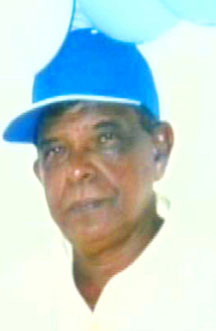Last Saturday’s boat accident at the mining community of Bartica in which two persons sustained injuries adds to a growing number of such incidents, while the agencies that hold authority over the sector remain silent on their investigations.
At the same time the speedboat associations across the country are working towards maintaining standards which the respective bodies have set for their members to observe.

The Maritime Administra-tion Department (MARAD) and the Sea and River Defence Unit as well as the Transport and Harbours Department (T&HD) are tasked with enforcing regulations in relation to the safety of vessels, the conduct of operators of same, including passenger vessels and the general maintenance of public transportation ports along the main rivers.
Over the past decade there have been a number of incidents involving passenger boats as well as private boats which operate in Guyana waters. While the river transportation regulations are said to be enforced by the regulators, river accidents continue to occur and no information is made public regarding the investigations into these.
This newspaper has made numerous unsuccessful attempts to obtain a comment or information from MARAD and calls to the office of the head of the unit Claudette Rogers end with persons saying she is in a meeting or simply not available. Transport Minister Robeson Benn had noted at the press briefing late last year that MARAD, as the designated agency which overlooks the transportation sector, has been carrying out its mandate to ensure regulations relative to the sector are enforced.
Incidents
In the past five years some of the incidents on the nation’s waters have ended in dire consequences.
In February 2007, Cheryl Peters of Mocha, Arcadia, East Bank Demerara and Hansrani, 48, known as ‘Buck’ of Annandale, East Coast Demerara drowned when the ‘backtrack’ boat in which they were travelling to Suriname capsized after it became entangled with a fishing seine. Seven other persons who were in the boat survived.
One month later, in March 2007, 25-year-old Peter Duncan and Rudy Fernandes died when a fishing vessel owned by Guyana Quality Seafoods capsized in the Atlantic Ocean.

In October 2008, 7 persons died when a vessel plying the Guyana/Suriname ‘backtrack’ route capsized along the Corentyne River, again, after its engine became entangled in a fishing seine. Among those who died were owner of the ill-fated Sevi 2 Roy Ramdass, Sheila Gonsalves, Henry Gonsalves of New Amsterdam, Indranie ‘Bird-lady’ Motiram, 49, of Crab-wood Creek, Ena Hope of Number 78 Village, Corriver-ton, and Drupatie Bahagiloo of Hampshire, Corentyne.
The deadliest year thus far in terms of boat mishaps was 2009. In August that year, the bodies of Jainarine Dinanauth and Henry Gibson were found in a damaged boat in the Essequibo River which seemed to have been struck by another vessel that continued on its way without rendering assistance; young Ricky Jainarine who was an occupant of the boat remains missing to date.
That month too, Moses Hardat Narine was killed and several others escaped with minor injuries after two boats collided in the Moruca River.
In May that year Jainarine Koshilla, Deanna Ramjit and Sharda Singh died when the boat in which they were travelling on the Abary River capsized.
The month before Tulsiram Sukdeo was badly injured in an early morning collision between a passenger boat and another vessel in the Demerara River; the man reportedly received a settlement package recently from a shipping line whose vessel was involved in the incident.
Also in February 2009, Asif Ali drowned when the boat in which he was transporting farm produce collided with a speedboat near Lannaballi on the Essequibo River in the twilight hours.
Last July Mahaica resident Delbert Williams fell off the Captain Lloyd 97 fishing vessel engulfed in flames after the Pritipaul Singh Invest-ments (PSI) owned-vessel caught afire in the Atlantic Ocean. There were four survivors following the accident but 22-year-old Orlon Munroe, who sustained first degree burns following the accident died some three months later while receiving medical attention.
Last December, a Brazilian miner died after the Bartica-bound passenger boat he was travelling in collided with a pile in the Essequibo River. The dead man’s name was given as Roderick Dantas.
In January this year 22-year-old Guyana Water Inc (GWI) employee Michelle Benjamin died after the boat she was in capsized in the Essequibo River in the vacinity of Aliki. Benjamin was among 10 passengers in the boat.
On February 14, a hit and run boat accident near Charity, Pomeroon, resulted in the death of 64-year-old Ishri Persaud a/k Rudolph or Lar of Grant Danielstown, Lower Pomeroon.
Safety
The respective speedboat associations which are responsible for overlooking the operations of passenger boats plying the various routes around the country have been working to make travel along the respective routes safe and orderly while at the same time, fighting what some see as a losing battle with ‘provocative roadrunners’.
The Bartica Speed Boat Association which has been in existence for more than a decade has been working with its members to maintain an optimum level of safety, while at the same time promoting passenger comfort during river travel.
A member of the association said recently that while there have been “a few incidents” over the past year along the route which its members ply, the association has been meeting on a monthly basis with the owners, captains and bowmen of the 50-odd boats which ply the route to instil awareness of the relevant safety regulations and related subjects.
He said the “conscientious approach” to the operation of vessels at Bartica includes the association playing a major role in ensuring that prospective boat captains carry out their duties in a responsible manner before they are recommended by the body for a licence. He said this includes the prospective captains having to work as bowmen for 4-5 years followed by a 1-2 year stint operating boats with less than 3 passengers. An experienced captain would sit alongside the trainee during this period.
He said that a stringent method of training is undertaken prior to the trainee moving towards obtaining a boat licence. MARAD would provide the relevant booklets which the trainee will study and if he is successful at the practical exam, he will proceed to apply for his licence. The exam is usually taken in Georgetown while it was noted recently that it is also taken in Bartica.
The association member noted that there are boat operators who ply their trade at Parika in what he termed an “unsafe manner”. He said that the boat operators who are deemed “provocative road runners” by the other operators at Parika, would apply for licences to operate as private vessels in the Parika area. However, he said, “that is all they want because they would use the licence to get passengers who are willing to travel urgently”. He said the “unsafe” operators would travel ill-equipped in terms of the relevant safety equipment while flagrantly violating the maritime regulations.
The association member said the route has experienced several incidents in recent times, including some with fatal consequences such asthat last December. He said the operator/captain would be required to present a written report to MARAD following such incidents while officers from the agency would visit the scene, inspect the boat and later pronounce on the investigations, most of which take months before a final outcome is realized.
Meantime, Chairman of the Parika/Supenaam Speed Boat Association Curtis Adams told this newspaper recently that the body has been carrying out practical checks on vessels to ensure that they are in compliance with the relevant regulations. These include checks to ensure the boats carry buoyancy kits, life jackets are not defective and that the legal configuration of fuel tanks to separate them from passengers is maintained. Boats are also required to have medical kits and a form of communication in the event of an emergency.
He said the boatmen who operate along the route would undergo training similar to that of the Bartica operators and according to him, while there are incidents which he considers minor, the boat owners and captains have worked towards ensuring such incidents are not repeated. Adams said that the association, which has been legally in existence for close to 10 years, overlooks the operations of some 88 boats.
He reiterated that the route has maintained a clean record in terms of incidents but he noted that those which occur along the route would be investigated by MARAD. Most investigations usually last for months.





